
Cao Sugong, one of the "Four Masters" of Huizhou ink in the Qing Dynasty, is a time-honored brand with a presence in Shanghai for over 160 years. The Paper has learned that a special exhibition dedicated to Cao Sugong's "Liu Wu Jin" collection of tobacco incense has recently opened at Shanghai Duoyunxuan. As part of Duoyunxuan's 125th anniversary celebrations, the exhibition brings together 125 masterpieces (a total of 348 ingots), spanning the reign of Emperor Kangxi of the Qing Dynasty to the 1990s, primarily from the Daoguang period of the Qing Dynasty to the Republic of China. Most of these pieces are on public display for the first time.
The phrase "Leaving Five Jin" in the exhibition's theme piqued the audience's curiosity. Du Hong, director of the Shanghai Museum of Calligraphy and Ink, explained, "Five Jin is an approximate number. When custom-making ink, the ink industry often produces an excess to keep in storage."
This tradition served three purposes: first, to allow for replacements in case of damage; second, to preserve samples for archival purposes; and third, to meet emergencies. It is this tradition of "keeping a little" that has benefited future generations immensely.
In the late 1950s, many ink-making companies in Shanghai merged into the Cao Sugong Ink Factory, bringing together their remaining ink products. A few years ago, when the Cao Sugong Ink Factory relocated, staff opened the large ink boxes left by their ancestors to clean them. They then spent three or four years researching the ink blocks and providing detailed descriptions of each.

Many of Cao Sugong's classic works are on display, documenting his development and symbolizing his splendid history. For example, "Ploughing and Weaving" was created by the third generation of Cao's family based on Emperor Kangxi's imperial poems and drawings of farming, silkworms, and weaving by his imperial painters, creating a new type of ink, "Imperial Ink."
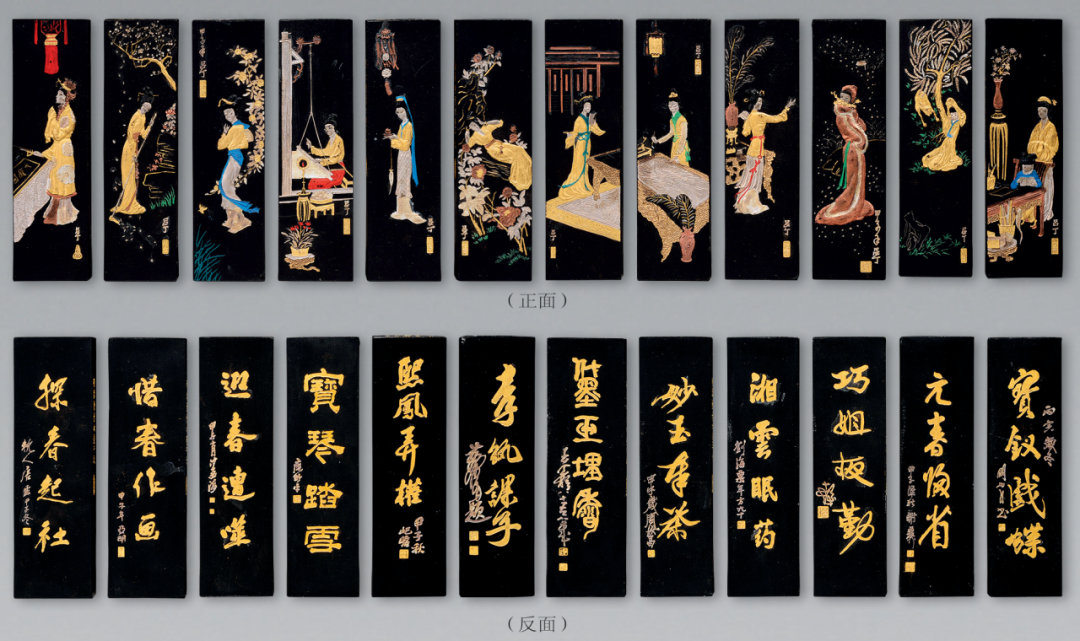
Jinling Twelve Beauties Ink Set: 1980s Maker: Shanghai Ink Factory (Huizhou Cao Sugong) Specifications: 24 liang (approximately 2 liang) per set
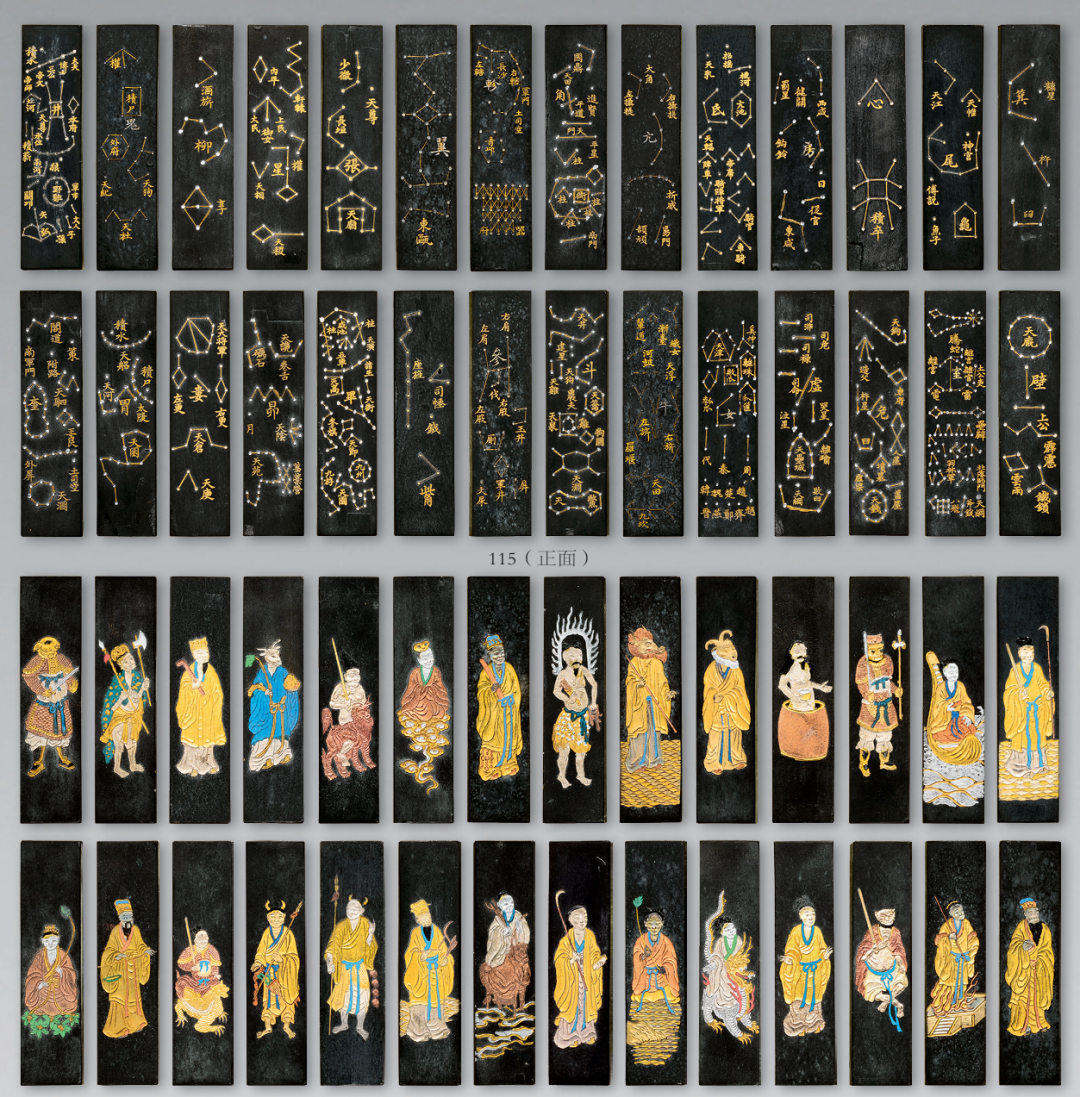
Twenty-Eight Constellations: During the Tongzhi Period of the Qing Dynasty
Tribute inks such as the "Twenty-Eight Constellations" and "Twenty-Four Heroes" are identical to those in the collection of the Palace Museum and are extremely valuable. The "Five Loves" and "Heroic Praise" series, representative of the innovative Shanghai-style Huizhou inks, are unforgettable memories for the first generation of red ink lovers in the early years of New China.
The "Cold Bamboo" ink painting from the Gengzi year of the Guangxu reign of the Qing Dynasty, featured in the exhibition, was the first ink for which Cao Sugong Ink Shop invited the Shanghai School master Wu Changshuo to create a draft. Shortly after Wu Changshuo resigned from his official position and returned to Shanghai in 1900, he met Cao Shuqin, the eleventh-generation grandson of Cao Sugong, through Ren Bonian. This marked the beginning of their calligraphy and painting partnership with Cao Sugong Ink Shop.
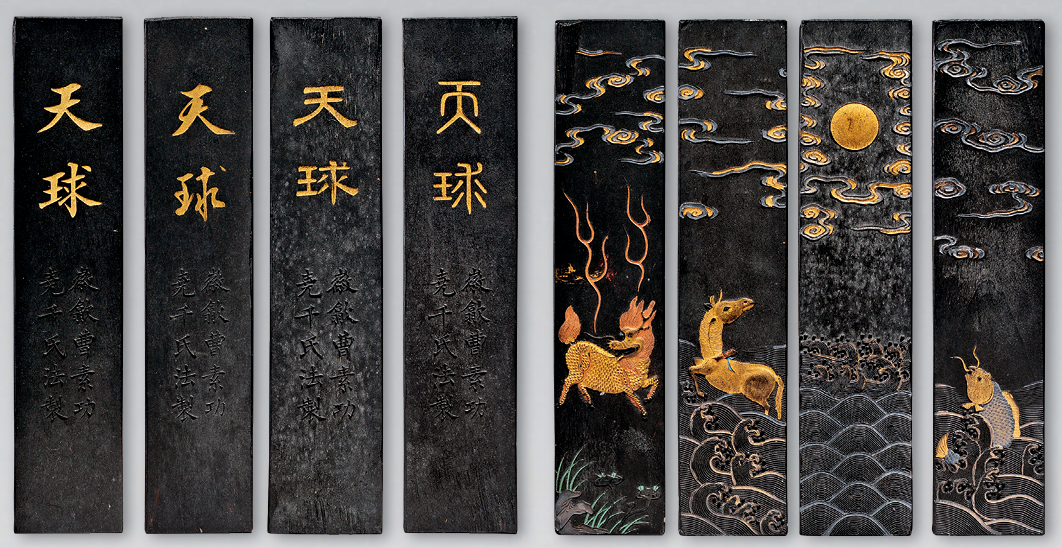
Celestial Era: 1980s Producer: Cao Sugong Ink Shop
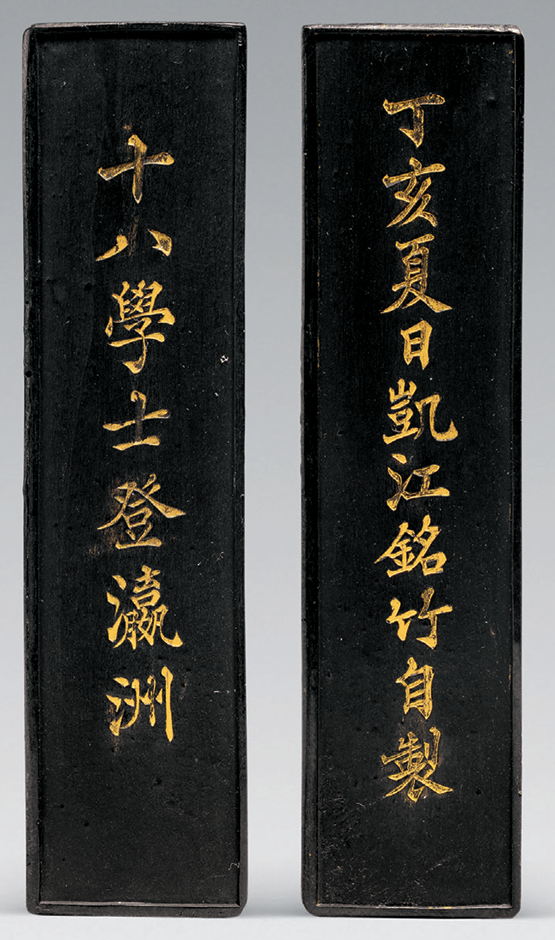
The era of the Eighteen Scholars ascending to Yingzhou: Guangxu of the Qing Dynasty
The exhibits showcase a large number of custom-made inks for personal use by scholars during the Tongzhi and Guangxu periods. They designed and finalized their own designs based on their own calligraphy and painting needs, highlighting their personal artistic style.
Yang Rui, one of the Six Gentlemen of the Hundred Days' Reform, commissioned this "Eighteen Scholars Ascending Yingzhou" ink to express his ideals and aspirations, and gifted it to like-minded individuals. To avoid suspicion of being part of a "rebellious party," the molds used to create this ink were destroyed after the Reform Movement failed, making this ink extremely rare and valuable.

Ink in the Dragon and Tiger Treasures Collection: Qing Guangxu Period, Maker: Tunxi Hu Kaiwen Ink Shop
The "Liyuexuan Collection" was customized for the female poet Zhao Fen in the Daoguang period as her studio name; and the "Longjie Hufu Pavilion Collection Ink" was customized for the studio where Wu Dacheng, a famous patriotic official and famous epigrapher in the late Qing Dynasty, collected tiger seals. These examples show that the four treasures of the study in ancient times not only had practical writing functions, but were also elegant objects for scholars to display in their study rooms and enjoy for their own enjoyment.
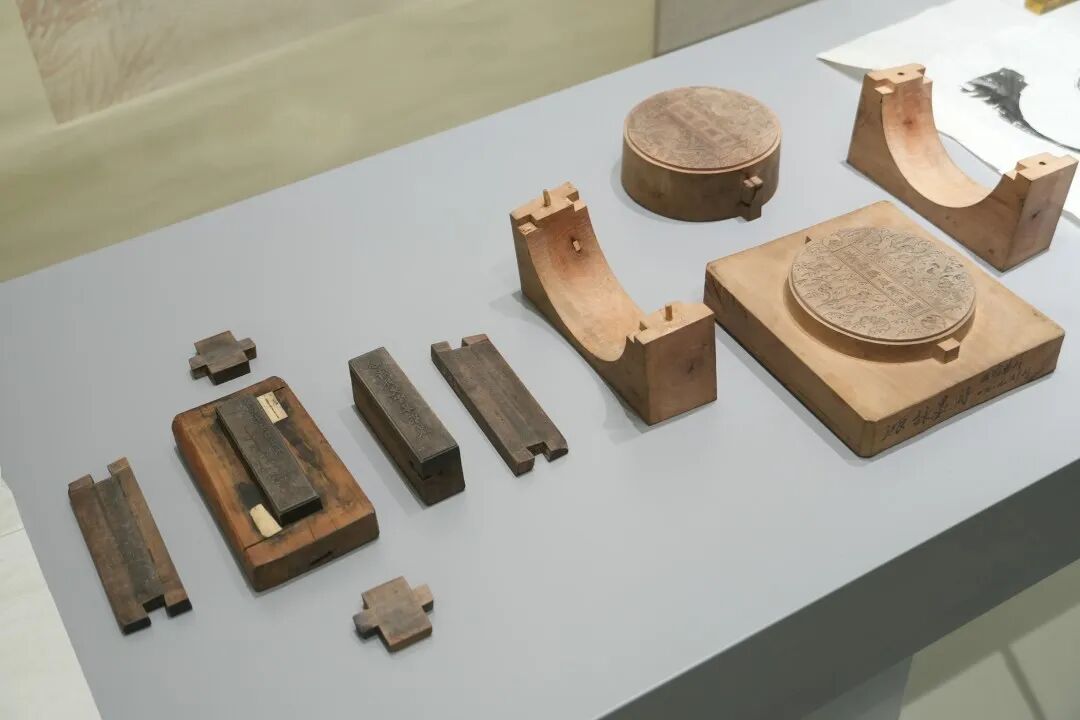
Ink molds on display
Duoyunxuan and Cao Sugong are both national demonstration bases for the productive protection of intangible cultural heritage. With over a century of close collaboration, their partnership has been mutually beneficial and enriching, making them a true duo in the art world. The earliest record of their collaboration is the "Haizanglou Selected Tung Smoke Ink (Taotian Zai Ni)" custom-made by Duoyunxuan at Cao Sugong Ink Shop in 1916. In 1984, Cao Sugong held the "China Cao Sugong Ink Exhibition" at Duoyunxuan, during which the two companies agreed to jointly create the "Twelve Beauties of Jinling" ink series. Duoyunxuan edited the ink front, with artist Lü Ding creating the characters from "Dream of the Red Chamber." Duoyunxuan and Cao Sugong commissioned inscriptions on the back of the ink, respectively, from twelve renowned calligraphers and painters: Zhu Qizhan, Liu Haisu, Wang Gezhi, Sha Menghai, Ying Yeping, Tang Yun, Xie Zhiliu, Guan Shanyue, Zhou Ruchang, Cheng Shifa, Ya Ming, and Huang Zhou.
The exhibition will be on display at Dooyunxuan, No. 422 Nanjing East Road, from September 13 to September 22; and at Dooyunxuan Art Center from September 24 to September 25.


